
COMM160:
Lesson 2: Parts of Speech
Lesson 2 Overview
Introduction
Now that you’re familiar with the academic integrity policies and have demonstrated the ability to identify instances of plagiarism, it’s time to move into the grammar portion of this course. For you to master the material of this course, it’s imperative that you learn the terminology we will be using for the rest of the semester.
Unit 2 goals
- To understand the grammatical building blocks for expressions
- To develop strategies for determining parts of speech
- To develop strategies for determining parts of a sentence
Objectives
- To identify various parts of speech in sentences
- To define the functions for various parts of speech
- To identify various parts of a sentence
- To define the functions for various parts of a sentence
Lesson Readings & Activities
By the end of this lesson, make sure you have completed the readings and activities found in the Lesson 2 Course Schedule.
Are you thinking this is too easy? Some of you might be asking, “Why am I being tested on identifying nouns, subjects, verbs, indirect objects, etc.?”
There is a simple answer for this: You need to know the terminology to progress through the course. When we move into topics such as verb moods and noun cases it is imperative to understand what is a subject complement and what constitutes a clause, for example.
For those learning foreign languages, this material will help you greatly. If you do not comprehend grammar and the requisite terms, your goal of learning a foreign language becomes so much more difficult because when grammatical terms are discussed in your foreign language classes, you have no referral point. It could be literally “all Greek” to you.
Lastly, when you are editing work, you will have the vocabulary necessary to say, “This construction is incorrect because of X, Y, and Z” instead of “I don’t know why it’s wrong, but I know it sounds wrong.”
With all that said, let’s get to it...
Please direct technical questions to the World Campus HelpDesk.
Parts of Speech
Keywords
- Noun
- Verb
- Adjective
- Interjection
- Preposition
- Conjunction
We will use this sentence to illustrate the parts of speech:
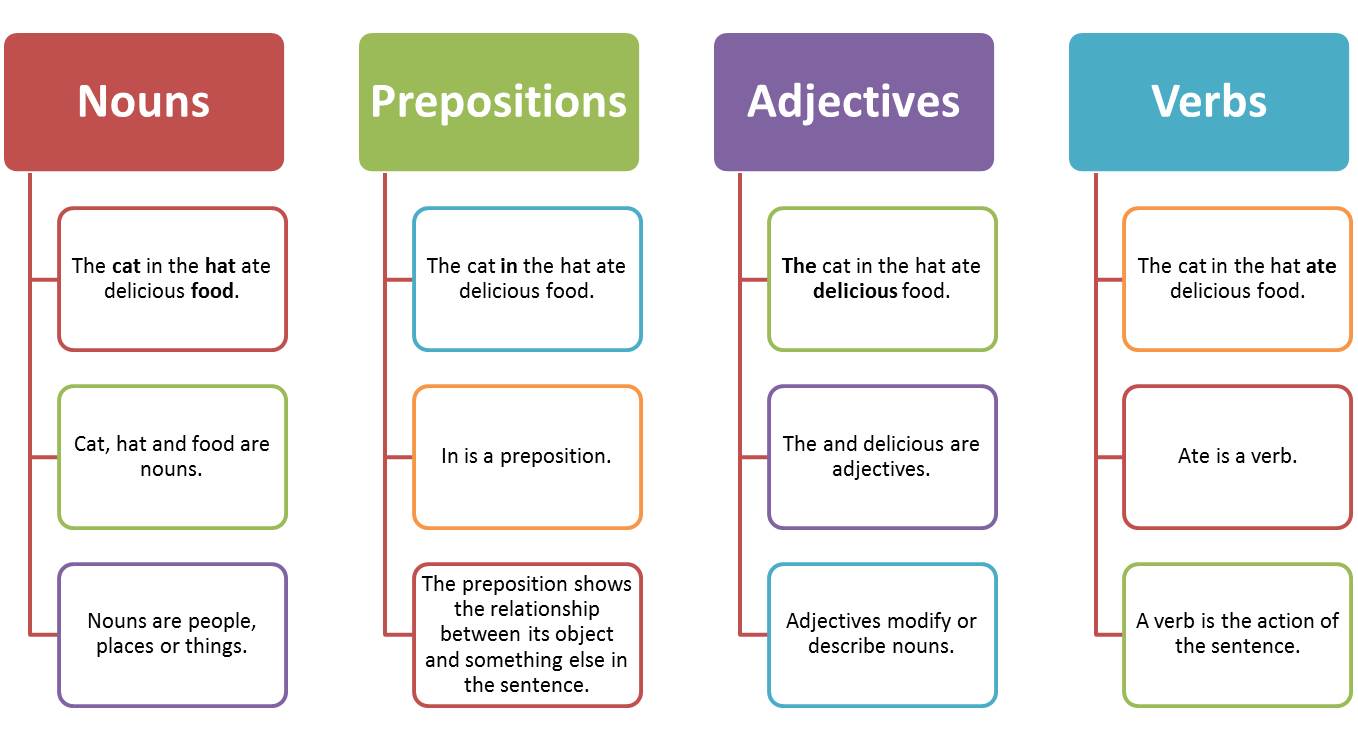
Now we will use the following sentence to illustrate other parts of speech. Also see pages 96-97 and 108-110 in Working with Words.
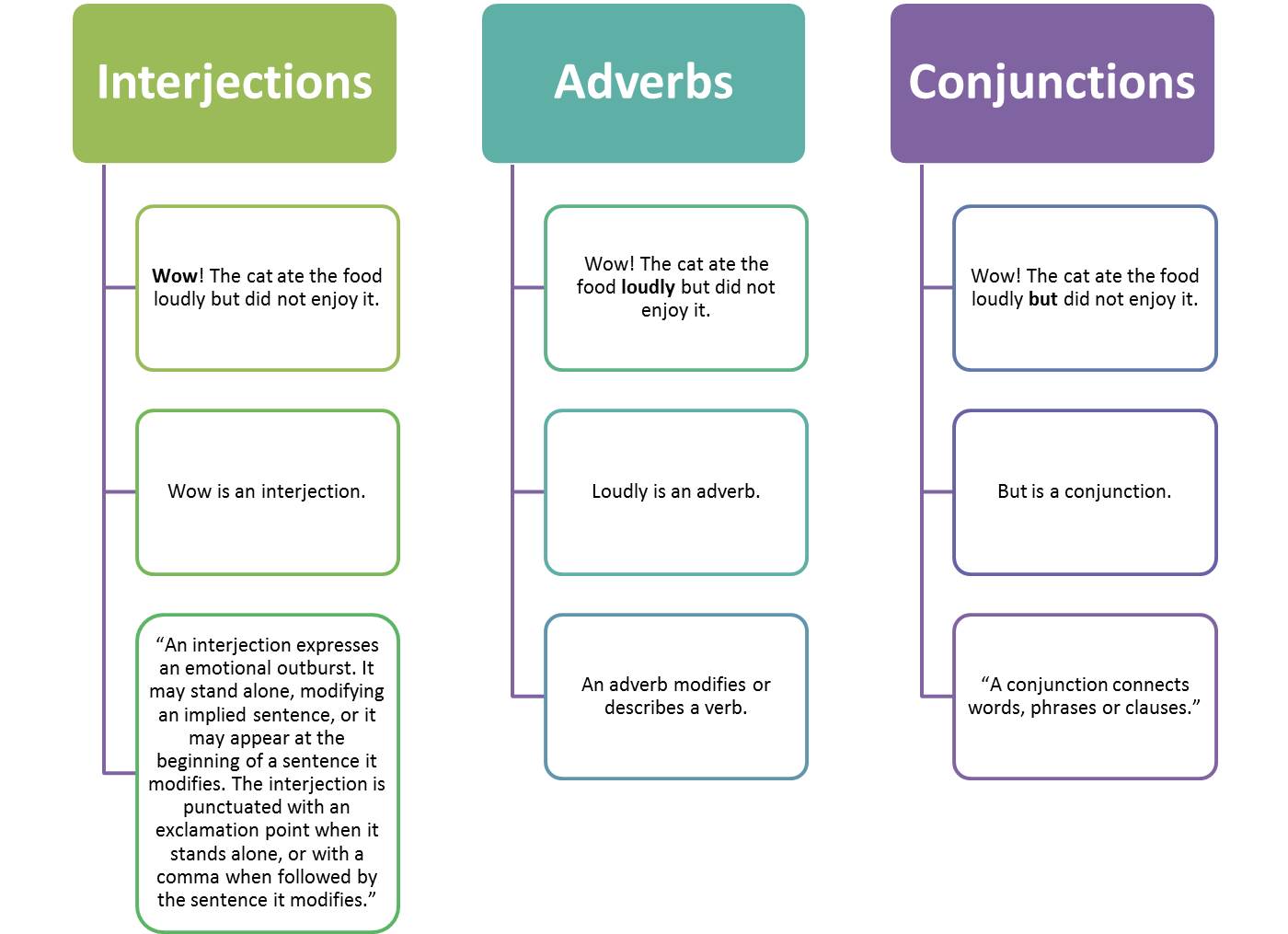
Parts of a Sentence
Keywords
- Appositive
- Clause
- Direct object
- Indirect object
- Phrase
- Predicate nominative/subject complement
- Prepositional phrase
- Subject
We will use this sentence to illustrate our first group of terms:
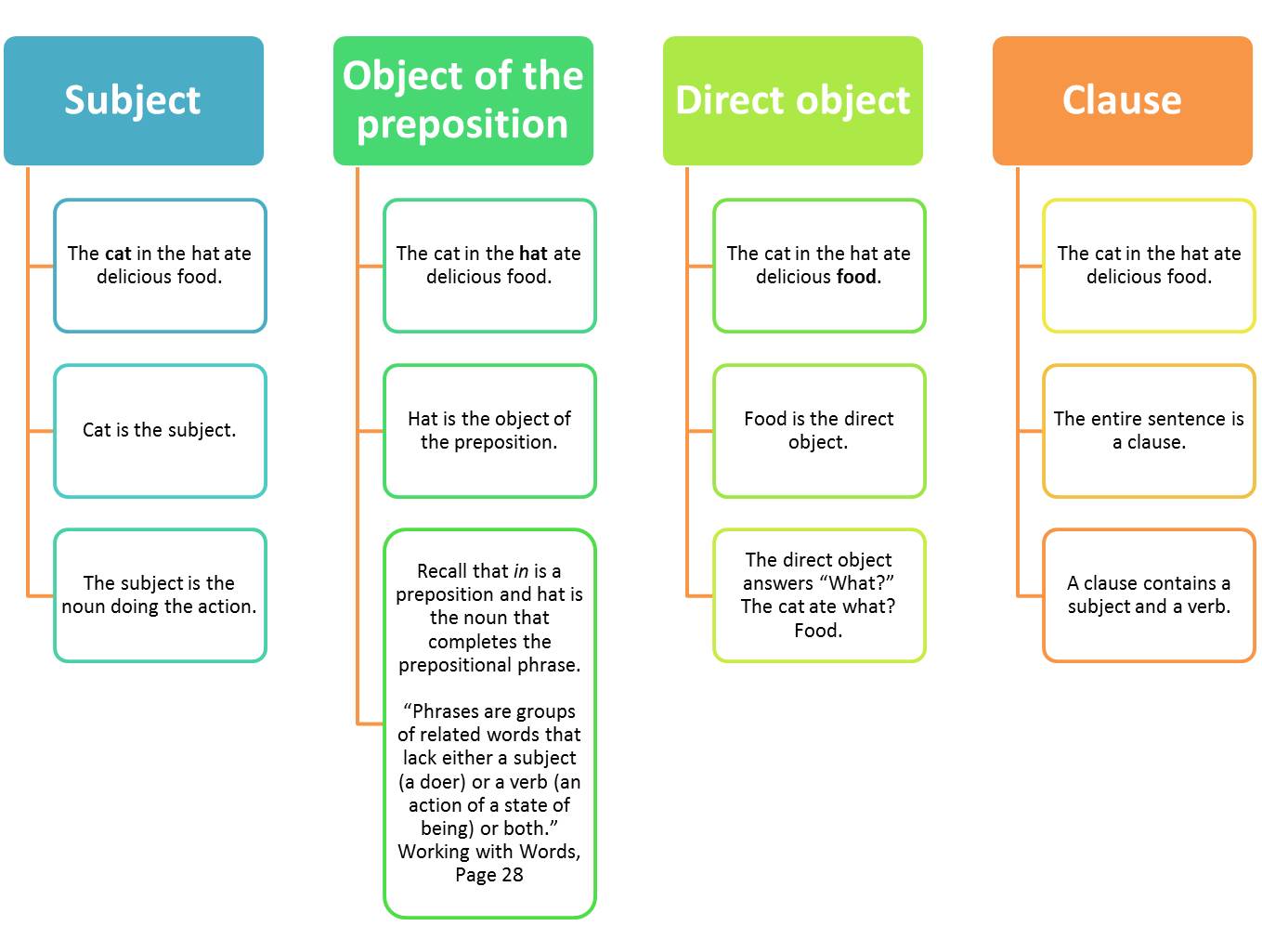
Next we will use this sentence:
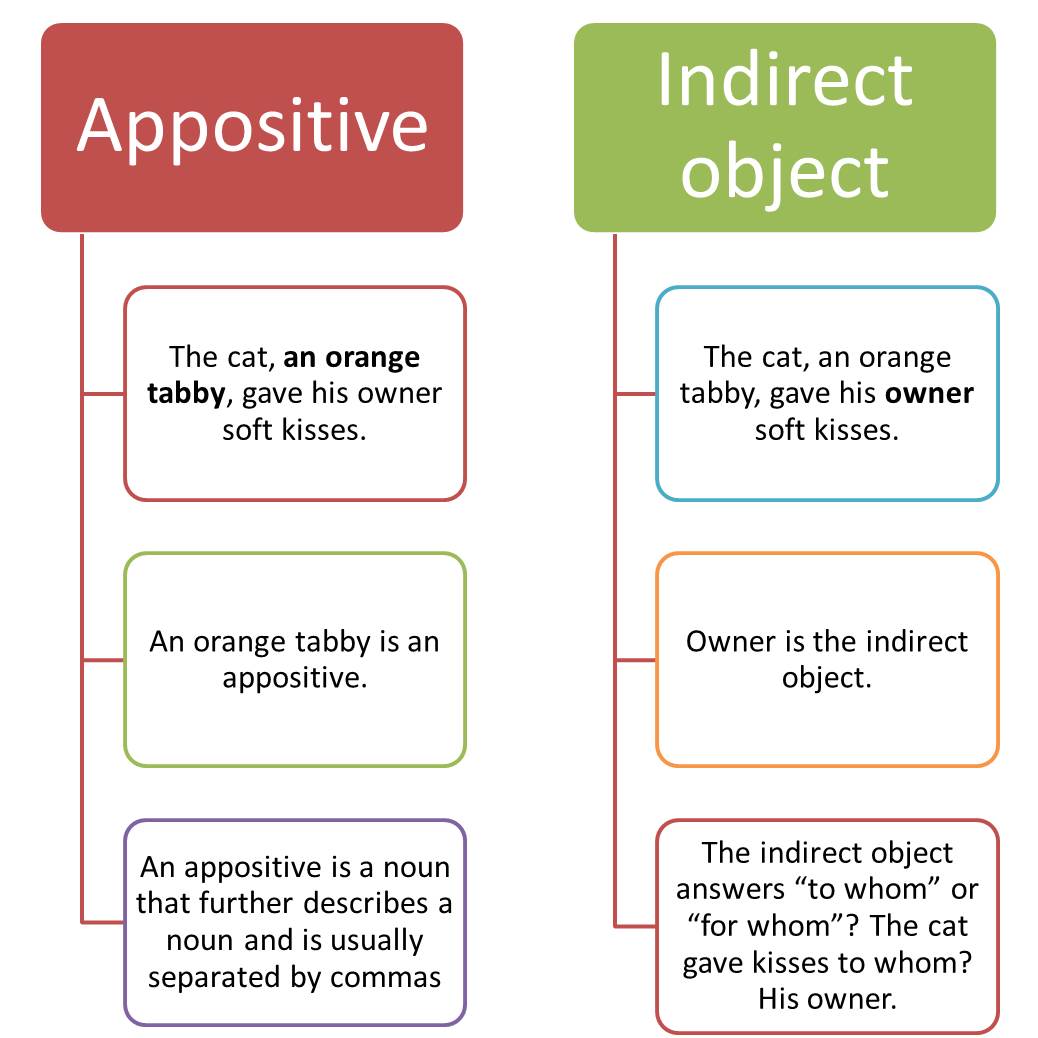
Finally, we will look at this sentence:
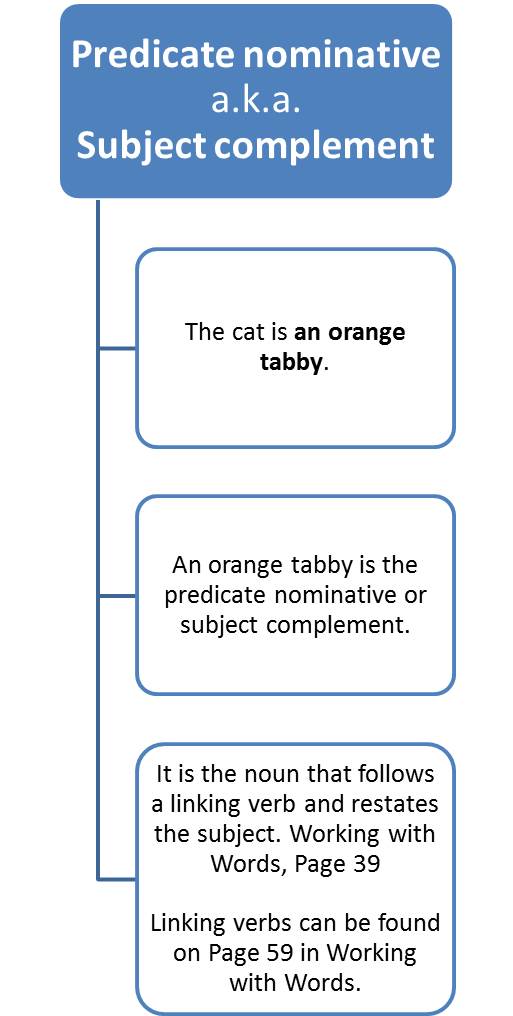
Lesson 2 Wrap Up
Definitions
- Noun - Person, place or thing
- Verb - Action of the sentence
- Adjective - Describes/modifies a noun
- Adverb - Describes/modifies a verb
- Interjection - Expresses emotion
- Preposition - Shows the relationship between two nouns
- Conjunction - “Connects words, phrases or clauses”
- Appositive - Noun that further describes a noun and is usually separated by commas
- Clause - Contains a subject and a verb
- Direct object - Answers what
- Indirect object - Answers to whom or for whom
- Phrase - A group of related words
- Predicate/subject complement - The noun that follows a linking verb
- Prepositional phrase - The words that complete the preposition
- Subject - The noun doing the action